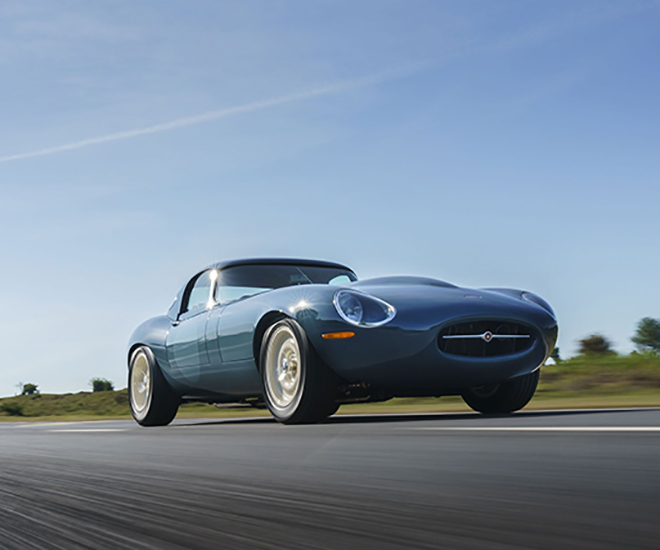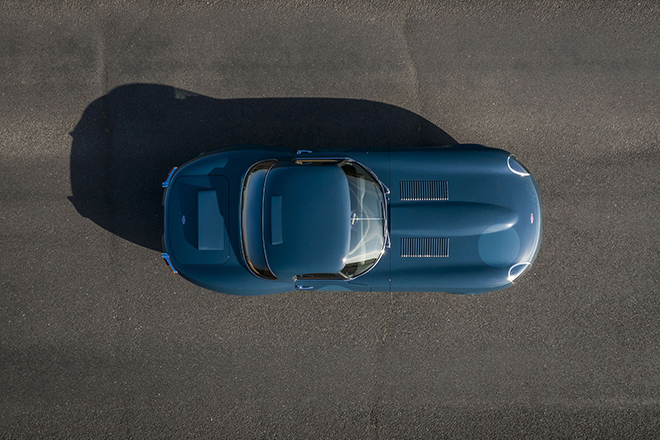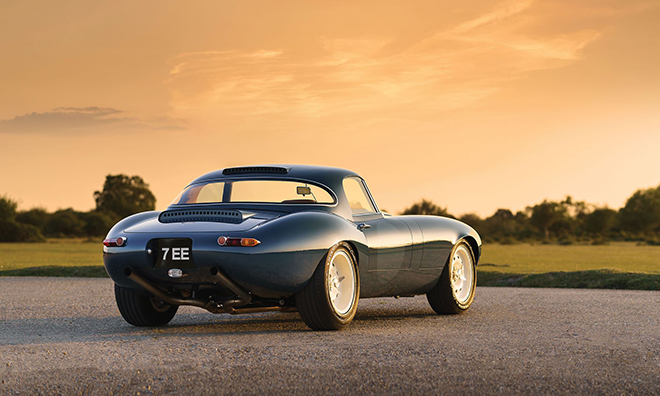Deemed the ultimate road-going evolution of one of the world’s rarest and most beautiful race cars, Jaguar’s Lightweight E-Type showcases a classic supercar with the intoxicating thrills of a 1963 factory Lightweight, thoughtfully and comprehensively re-engineered.

Highly exclusive and a direct descendent of the legendary C and D-Types, only 12 Lightweights were manufactured by the factory for the 1963 season. Noisy, brutal, exhilarating and exhausting, these brilliant race cars were exhilarating on the track and visceral on the road.
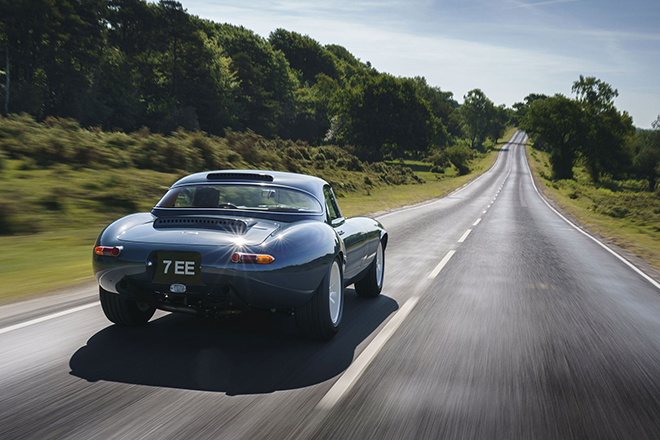
Re -equipping and re-tuning 16 legendary D-Type racers to create the XKSS – which is revered for being race car fast, yet comfortably refined, thus not only allowing owners such as Steve McQueen to drive them daily, but placing them in an all-new calibre amongst the most highly prized collectors’ automobiles.
Long uncontested, especially by Lightweight E-Type equivalents, the world’s most capable E-Type specialist with over 35 years of experience in developing a deep understanding of every nuance of the model, evolving and refining the original design to create ‘ultimate’ E-Types that meet the quality and performance aspirations of the world’s most demanding enthusiasts, Eagle presents its latest classic supercar transformation.
Replacing each panel with lightweight aluminium of a modern grade more suited to road use that than the thin, fragile material of the original Lightweights, specialist craftsmen invest more than 2,500 hours forming the sensual curves on an English Wheel, then fitting them to a tolerance many times more demanding than those specified by Jaguar’s Competition Department.
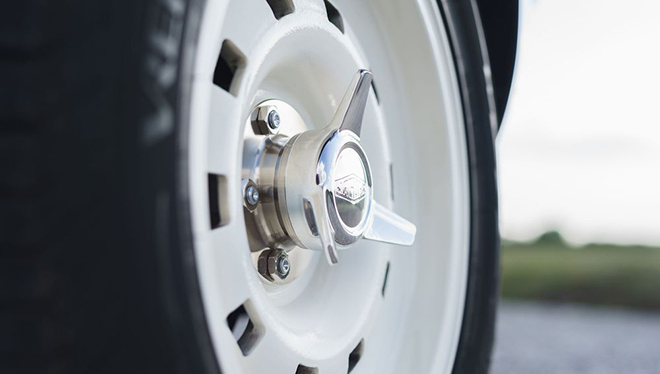
The famous Lightweight profile is faithfully recreated, with subtle enhancements to aerodynamics including a deeper rear ramp angle, deeper sills (which also increase chassis stiffness and allow the driver to sit lower, improving headroom and lowering the centre of gravity) and increased screen rake front and rear with bespoke glass. Wheel arch size has also been enlarged to accommodate 16” peg-drive magnesium alloy wheels, modelled on the original Dunlop racing wheels but wider, with a little more offset and one inch taller to allow more modern tyres.
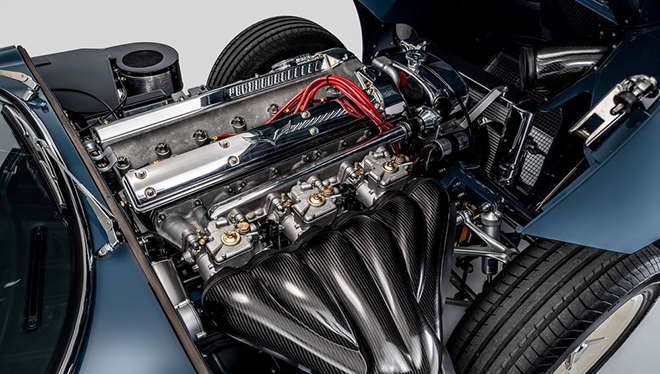
The heart of the car is Eagle’s 4.7 litre evolution of the famous Jaguar XK straight six that was fitted not just to E-Types, but also to the C and D-Types that, in the 1950s, won an astonishing five outright victories at Le Mans. Factory Lightweights were specified with an aluminium block replacing the iron block of road cars, an upgrade we have replicated. A bespoke crankshaft, pistons and con rods improve responsiveness and durability, while a wide-angle head, as specified for factory Lightweights, accommodates larger valves and a higher lift camshaft for improved breathing. Peak power of 380 bhp arrives at 5,750 rpm, but the pleasure of this unit is the vast wave of torque: 375 lb ft at 4,000 rpm and a wonderfully flat curve that makes the Eagle Lightweight GT feel effortlessly fast, before an urgent, howling dash for the redline.

As any driver familiar with the best lightweight sports cars will confirm, shaving a few grams from as many components as possible adds up to a wonderfully agile vehicle. Switching major castings to aluminium is a proven route to useful weight savings: Eagle has gone a significant step further by specifying ultra-lightweight magnesium alloys for the gearbox case, bell housing, differential case, sump and rear hub carriers. The gearbox has been uprated to a carefully re-engineered, all synchromesh five speed unit, taking care to provide a perfect period feel to the change with no compromise in the position of the lever. There is also no compromise allowed in the gearbox ratios, as each one has been designed to ensure a seamless flow of torque that is ideally matched to the weight of the car and the characteristics of the engine.
Deemed the ultimate road-going evolution of one of the world’s rarest and most beautiful race cars, Jaguar’s Lightweight E-Type showcases a classic supercar with the intoxicating thrills of a 1963 factory Lightweight, thoughtfully and comprehensively re-engineered.
The switch to lightweight engine and differential castings is particularly important because reducing the weight towards the ends of the car reduces the polar moment of inertia, making it more agile, while a significantly lighter front contributes to fine steering response and feel. Through extensive use of specialist lightweight materials including magnesium, Inconel and titanium, the Eagle Lightweight GT weighs just 1017 kg; not in stripped-out race configuration, but luxuriously specified for comfortable road use.
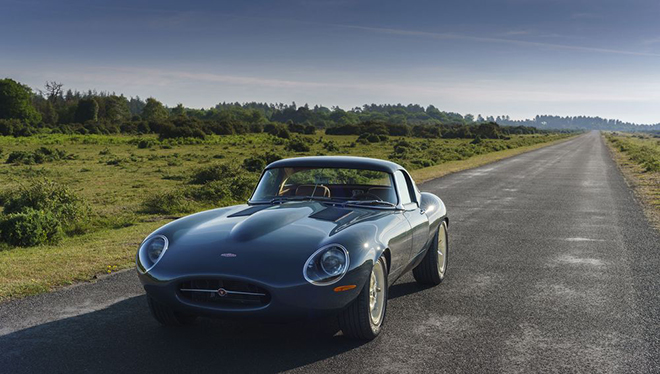
Comfortable road use also means resisting the temptation to give the Eagle Lightweight GT an exhaust note that shouts ‘race car’ or a track-focussed suspension calibration that too often makes such vehicles too harsh. Far more challenging is to combine taught, sports car dynamics with the ride quality and refinement of a world-class Grand Tourer. Working together with the seats and tyres, Eagle’s lightweight suspension, carefully specified geometry, spring rates, bushings and bespoke Ohlins adjustable dampers, ensures long distances can be completed in refreshing comfort.
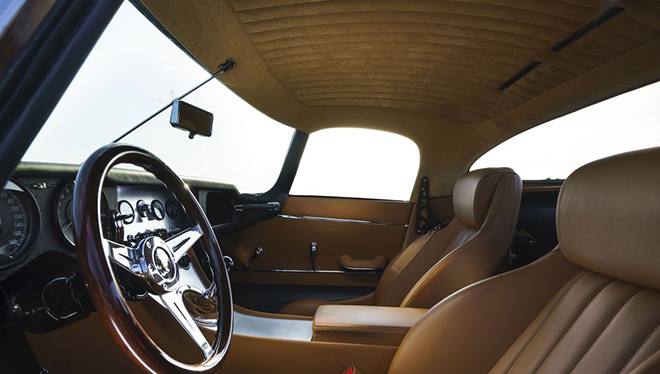
Throughout the car, every component has been evaluated and, where even a marginal improvement can be engineered, has been upgraded to increase performance, comfort, durability and safety. Take seating as an example. The design of the floorpan, pedal mountings and the rear bulkhead have been tweaked to dramatically increase legroom in the E-Type’s notoriously cramped cabin while the seats are redesigned to improve safety, retention and long-term comfort. The remarkable attention to detail has even increased finger room around the seat adjusters, using the latest 3D printing techniques to create bespoke control levers.
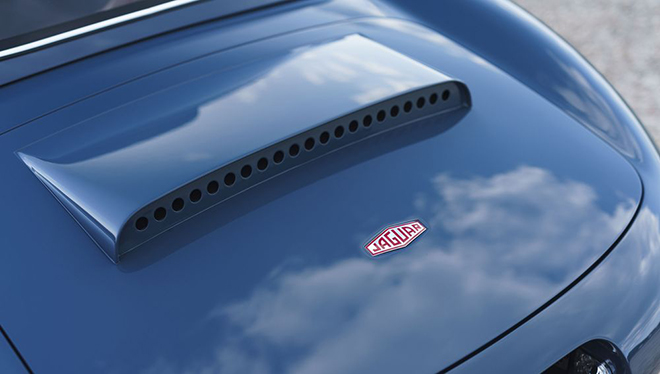
That attention to detail is continued throughout the Eagle Lightweight GT in the most comprehensive review and enhancement of an E-Type ever undertaken, accomplished with great sensitivity to the original feel and aesthetic. Most of the revisions, like the gorgeous peg-drive magnesium alloy wheels and aluminium three eared wheel spinner nuts, could be described as ultimate evolutions of the correct period technologies, but there are also carefully selected modern systems that have been discreetly integrated. Braking is by four piston, servo assisted vented discs, a subtly integrated electrical distribution panel increases safety and reliability and the extreme cabin heat of the original is solved by modern thermal barrier materials and the careful integration of a discreet air conditioning system; designed in-house to eliminate the compromises that would be inevitable with a bought-in design.
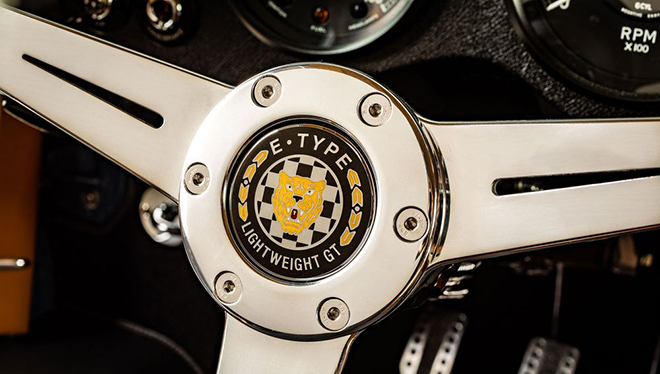
The result is a classic supercar that fuses the character and charm of the original Jaguar E-Type, on which the Eagle is based, with the intoxicating thrills of a 1963 factory Lightweight, thoughtfully and comprehensively re-engineered to ensure the new owner enjoys every mile, every day.
–
Adapted from the official Eagle website.

